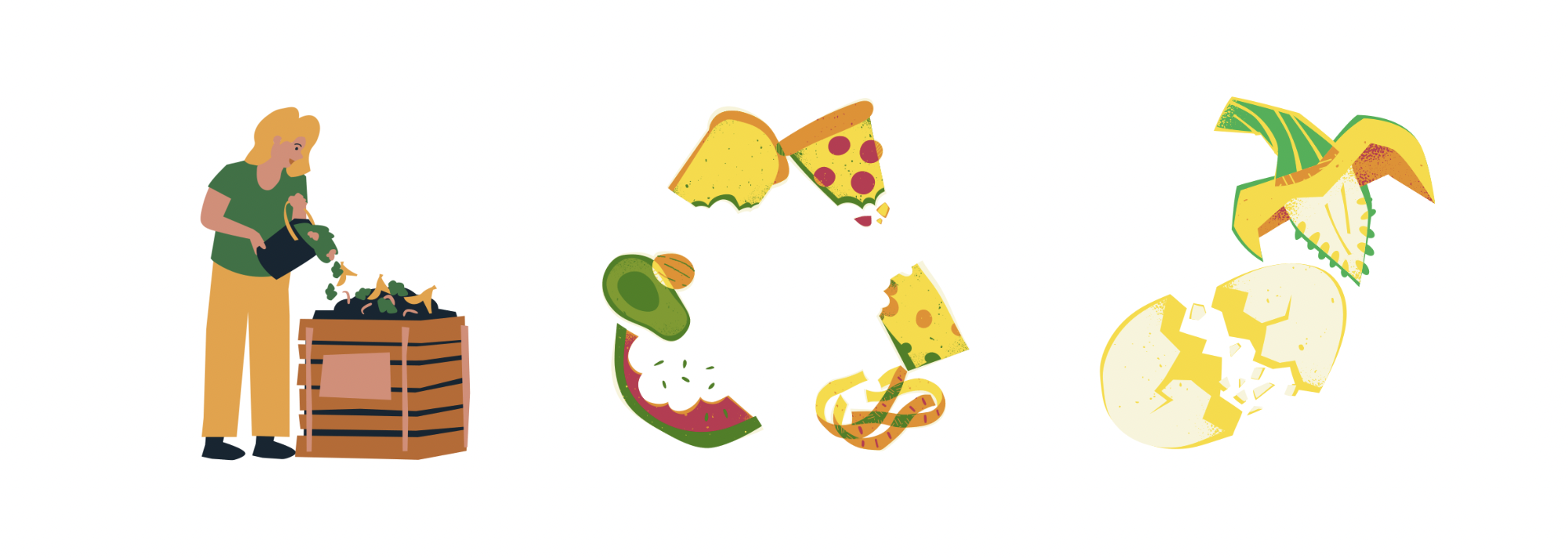"Mottainai"
This Japanese word gives a feeling of sadness over the loss of something.
Did you know that this word is becoming universal lately?
Wangari Maathai, who was impressed at this beautiful Japanese word that expresses love and respect for the earth's resources,
suggested spreading this word to the world.
However, ironically, in Japan, food waste is becoming a big problem.

What is food waste?

Food waste is food that is thrown away even though it is still edible.
In Japan, 5 to 6 million tons of food waste is produced every year.

Japan's food self-sufficiency rate has been declining for a long time and is at the lowest level among developed countries.
According to the announcement by the Ministry of Agriculture, Forestry and Fisheries,
Japan's food self-sufficiency rate on a calorie basis in 2021 was 38%.
The remaining 62% of food is dependent on imports.
This means that we are throwing away a large amount of food,
even though we import them from overseas, spending money and energy.
What is food self-sufficiency rate?
From the perspective of food security, the calorie-based food self-sufficiency ratio focuses on calories, which are the most basic nutritional value.
When comparing the food self-sufficiency rate on a calorie basis with other countries, while the food self-sufficiency rate of countries with large exports such as Canada, Australia, and the United States exceeds 100%, the domestic food self-sufficiency rate is in the 30% range, which is lower higher than other countries.
If consumers actively choose domestically produced agricultural products, it will lead to an increase in domestic production and improve the self-sufficiency rate.
It is said that the food self-sufficiency rate will improve by 1% if each citizen eats one more serving of rice a day and two more servings of tofu made with 100% domestic soybeans a month for one year.
In addition, food production, import, processing, distribution, and sales are all economic activities, so they can be converted into money.
The self-sufficiency rate calculated based on the production value and import value is the "production value-based food self-sufficiency rate."
In 2019, the ratio of domestic production to the total amount of money required for the entire food supply was 66%.
The calorie-based food self-sufficiency rate is greatly affected by rice, wheat, and fats and oils, which have high calories per unit weight, while the production value-based self-sufficiency rate is greatly affected by livestock products, vegetables, and seafood, which have high unit prices.
Domestic products are more expensive than imported products, so the domestic production value is higher, and the self-sufficiency rate based on production value is higher than that based on calories.

Where does it happen?
Food loss occurs at several stages in the supply chain
(a series of processes from manufacturing, delivery, sales, and consumption until products reach the consumer's hand).
In, Japan food waste is broadly classified into two categories:
business-related and household-related.
Business-related food waste refers to food that is discarded in each process of the manufacturing, wholesale, retail, and restaurant industries.
Household-based food waste refers to food that is discarded without being eaten at residential homes.

Professor Onigiri, there doesn't seem to be much food was at home.
Is there more business-related food loss?
Actually, not really.
Household-related food loss accounts for about half of all food loss.


Then, what kind of food waste is generated in which process?
See business-related food wasteSee household-related food waste

Bibliography :
MOTTAINAI -「MOTTAINAIについて」(http://www.mottainai.info/jp/about/)
ロスゼロ -「フードロスについて」(https://www.losszero.jp/foodloss.html)
農林水産省 -「食品ロス及びリサイクルをめぐる情勢」(https://www.maff.go.jp/j/shokusan/recycle/syoku_loss/attach/pdf/161227_4-52.pdf)「食料需給表」(https://www.maff.go.jp/j/zyukyu/fbs/attach/pdf/index-13.pdf)
